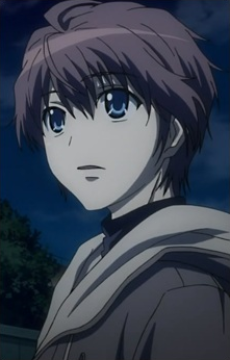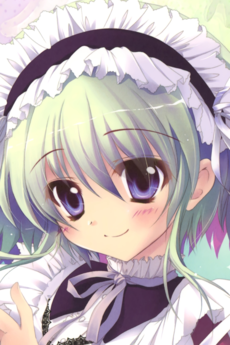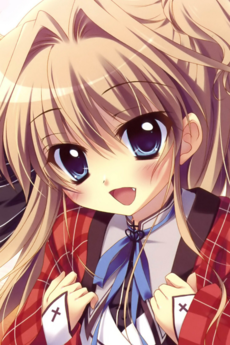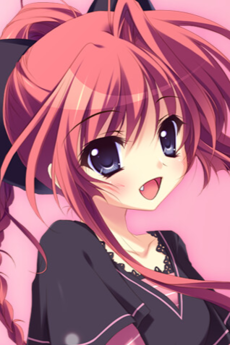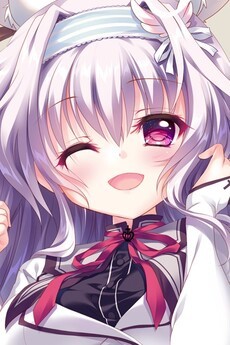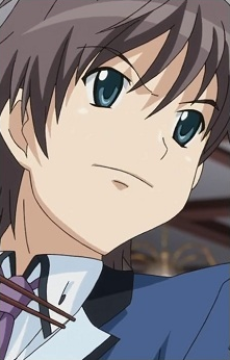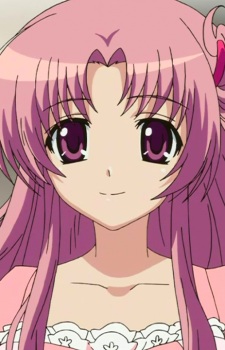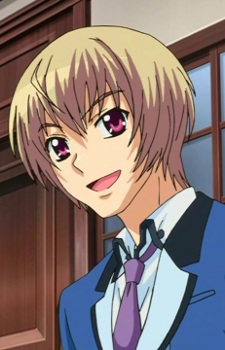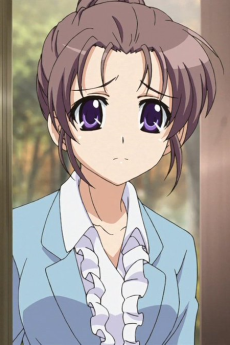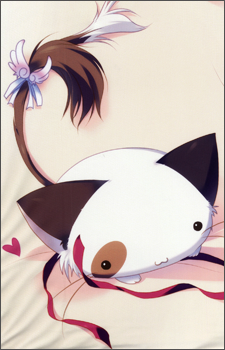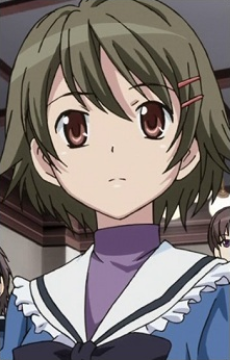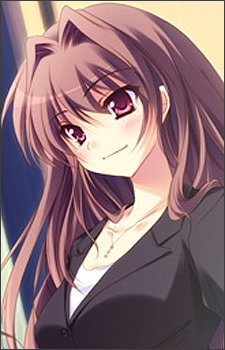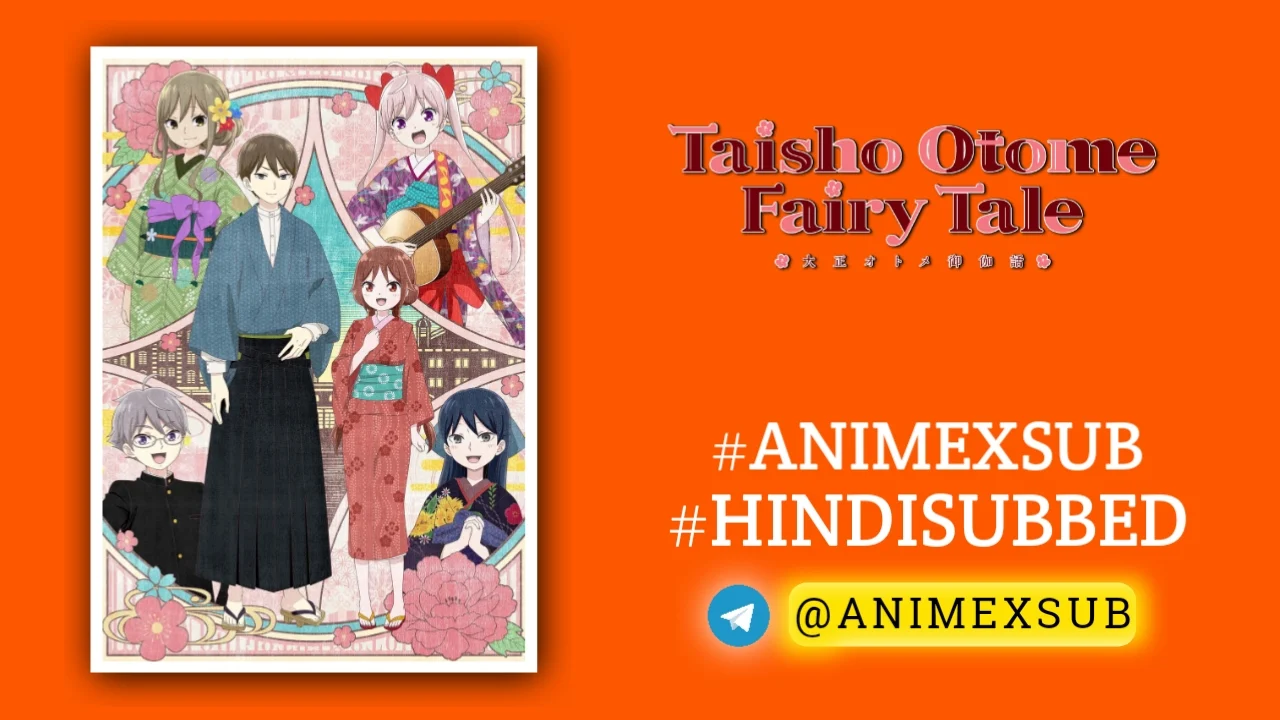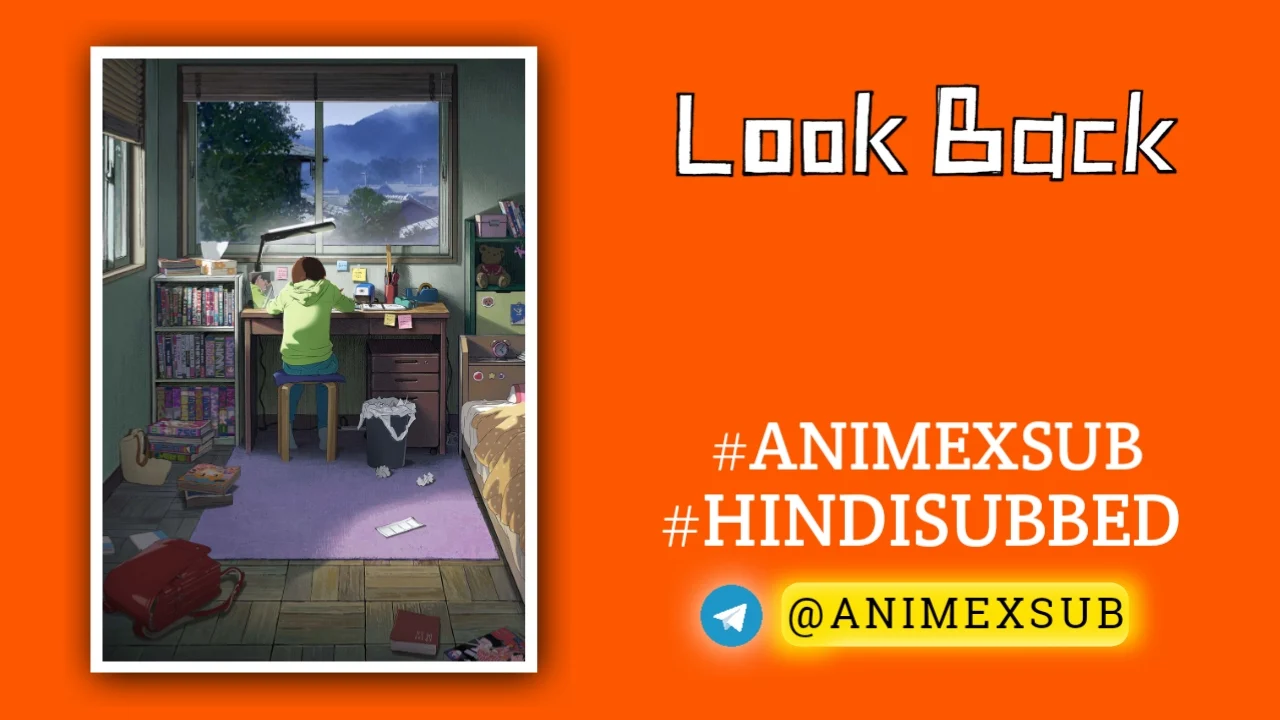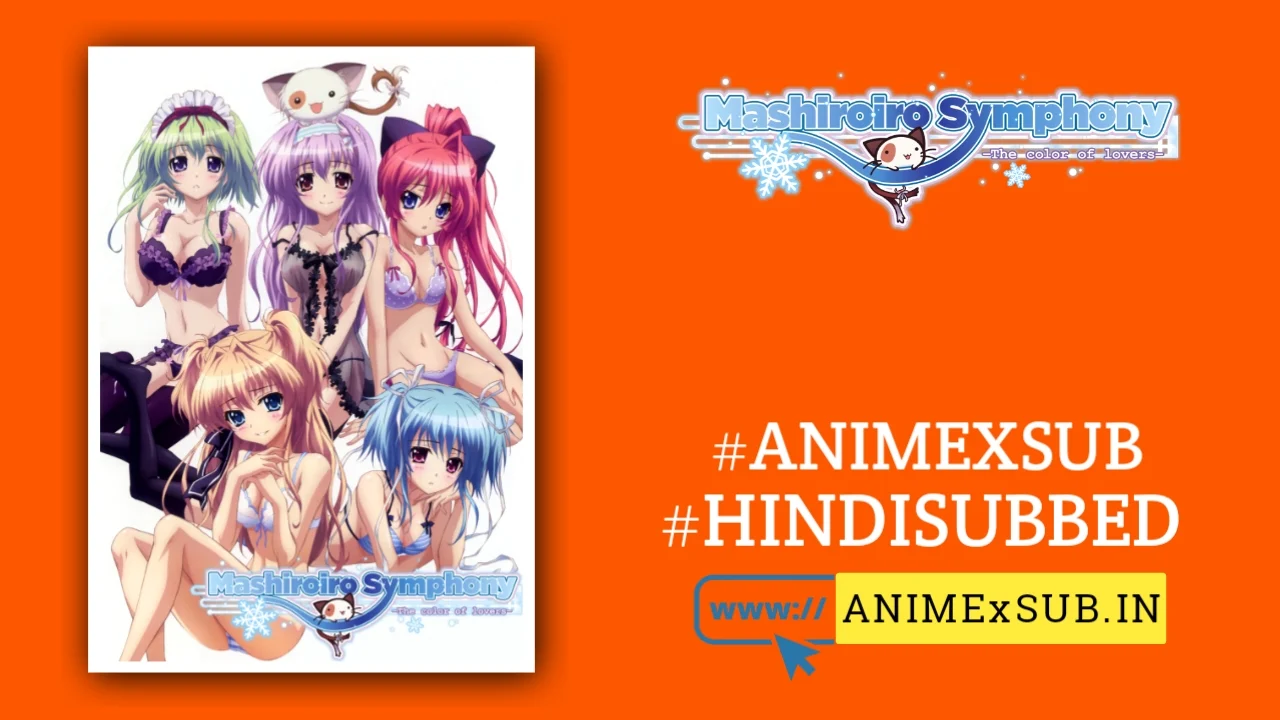
Mashiroiro Symphony: The Color of Lovers Hindi Subbed [04/12] | Mashiro-iro Symphony: The Color of Lovers Hindi Sub
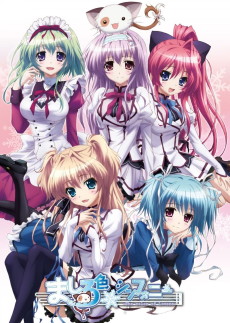
Mashiroiro Symphony: The color of lovers
Mashiroiro SymphonySynopsis
When boys suddenly get into places where they've never been allowed before, some girls tend to get upset. So when the decision is made to merge the elite Yuihime Girls' Private Academy and the coeducational Kagamidai Private Academy, everyone wants to take extra care in avoiding trouble while bringing the two Privates together. Therefore, rather than just sticking the Kagamidai boys into the Yuihime girls all at once, a plan is concocted in which a group of test males will be inserted into the Girls' Private Academy first. Thus it is that poor young Shingo finds himself being thrown as a sacrificial lamb to the lionesses of Yuihime, who aren't exactly waiting for him with open arms. Will Shingo manage to survive the estrogen soaked death pit that is Yuihime? Can the girls learn to be more receptive to the boys? And just how long until something involving panties will cause emotions to flare, sparks to fly and the battle of the sexes to explode? (Source: Sentai Filmworks)
Characters
Mashiroiro Symphony: The Color of Lovers Season 1 – A Subtle Symphony of Emotion and Artistry
Mashiroiro Symphony: The Color of Lovers Season 1, a 2011 anime adaptation by Manglobe, offers a refreshing take on the harem genre, weaving a delicate balance of emotional depth, character nuance, and visual elegance. Based on a visual novel, this 12-episode series stands out by subverting expectations and delivering a narrative that prioritizes heartfelt connections over clichés. Here’s an in-depth, spoiler-light exploration of why this anime is a hidden gem, blending unique storytelling, compelling characters, and technical brilliance into a cohesive and emotionally resonant experience.
A Premise That Defies Convention
At its core, Mashiroiro Symphony follows Shingo Uryuu, a student from Kagamidai Private Academy, who is selected as part of a test group to integrate into the elite, all-girls Yuihime Private Academy. The premise sets up a familiar harem scenario: a lone boy navigating a sea of female characters, each with distinct personalities. However, the series quickly distinguishes itself by focusing on the emotional and social complexities of this integration rather than leaning heavily into fanservice or predictable romantic tropes. The narrative explores themes of acceptance, personal growth, and the breaking down of barriers, both gender-based and personal, in a way that feels organic and grounded.
What makes the story unique is its refusal to follow the typical harem formula. While many series in the genre adhere to a predictable pattern where the first girl introduced becomes the inevitable romantic focus, Mashiroiro Symphony takes a bold risk by shifting its narrative spotlight midway through the season. This pivot, centered on Miu Amaha’s route from the original visual novel, keeps viewers on their toes and challenges preconceived notions about who the “main” heroine should be. The shift is executed with care, ensuring that character motivations remain consistent and emotionally authentic, making the story feel less like a game adaptation and more like a cohesive narrative arc.
Characters That Breathe Life into the Story
The strength of Mashiroiro Symphony lies in its well-crafted ensemble of characters, each bringing a distinct flavor to the narrative. Shingo Uryuu is a standout protagonist, not because he’s flashy or eccentric, but because he’s refreshingly grounded. Unlike many harem leads who fall into the trap of being overly perverted or perpetually flustered, Shingo is diligent, empathetic, and genuinely likable. His role as a mediator between the boys and girls at Yuihime makes him a catalyst for change, and his interactions feel natural rather than contrived.
The female leads—Airi Sena, Miu Amaha, Sana Inui, and Angelina Nanatsu Sewell—are equally compelling, each representing a different facet of the show’s emotional spectrum. Airi, initially cold and resistant to the school merger, undergoes significant growth as her vulnerabilities are revealed, offering one of the series’ most satisfying character arcs. Miu, with her gentle demeanor and passion for animals, brings a quiet intensity that anchors the second half of the season. Sana’s tsundere personality adds spice without feeling overdone, while Angelina’s quirky maid persona injects humor and warmth. Supporting characters like Sakuno Uryuu, Shingo’s mature younger sister, and the enigmatic Pannya, a cat-like creature, add layers of charm and intrigue to the cast.
What sets these characters apart is their depth. The series avoids reducing them to archetypes by giving each personal struggles and motivations that tie into the broader themes of acceptance and connection. For example, Airi’s arc explores the pressure to maintain a perfect facade, while Miu’s dedication to the Nuko Club reflects her selflessness and inner strength. These nuances make the characters relatable and their relationships meaningful, elevating the series beyond typical harem fare.
Visual and Auditory Artistry
Visually, Mashiroiro Symphony is a feast for the eyes, with Manglobe’s signature polish shining through. The art style, characterized by vibrant colors and clean lines, captures the essence of its visual novel roots while maintaining a distinct anime identity. Character designs are expressive and varied, ensuring each girl stands out visually as well as narratively. The backgrounds, though largely confined to the school setting, are detailed and atmospheric, with soft lighting and seasonal changes that enhance the mood of each episode.
The soundtrack, while not revolutionary, complements the series perfectly. The opening theme, “Authentic Symphony” by Choucho, is a catchy and uplifting track that sets the tone for the show’s emotional journey. The ending theme, “Suisai Candy” by marble, is equally memorable, with its soothing melody reflecting the series’ gentle heart. Sound design is subtle but effective, with ambient noises and character voice acting—featuring talents like Noriko Rikimaru (Miu) and Ryouko Ono (Airi)—bringing authenticity to every scene. One minor critique is Pannya’s repetitive “Pyu” vocalization, which can grate over time, but this is a small blemish on an otherwise stellar auditory experience.
Narrative Strengths and Subtle Innovations
The series’ pacing is deliberate, allowing relationships to develop naturally rather than rushing toward romantic conclusions. Each episode, titled with a color motif (e.g., “White-Colored Meeting,” “Airi-Colored Secret”), ties into the emotional tone of the story, creating a cohesive thematic thread. The focus on the Nuko Club, a group dedicated to caring for injured animals, adds a unique layer to the narrative, serving as a metaphor for nurturing relationships and healing emotional wounds. This subplot, particularly in the latter half, provides some of the series’ most poignant moments, as characters confront their insecurities and learn to rely on one another.
Unlike many harem anime, Mashiroiro Symphony avoids excessive fanservice, opting instead for moments of genuine emotional intimacy. Scenes like Airi’s birthday celebration or Miu’s quiet moments with the kittens are understated yet powerful, showcasing the show’s ability to find beauty in the mundane. The series also handles its romantic tension with restraint, allowing feelings to simmer rather than explode, which makes the eventual resolutions feel earned.
Critiques and Considerations
No series is without flaws, and Mashiroiro Symphony has its share. The shift in focus from one heroine to another, while bold, may alienate viewers who grow attached to the initial romantic setup. Some fans have noted that the transition feels abrupt, though the series mitigates this with strong character development in the second half. Additionally, the limited scope of the setting—primarily the school and Airi’s apartment—can feel restrictive, though the detailed art direction compensates for this. Finally, while the series excels in character-driven storytelling, those seeking high-stakes drama or action may find the plot too subdued.
Why It Stands Out
Mashiroiro Symphony: The Color of Lovers Season 1 is a masterclass in taking a familiar genre and infusing it with fresh ideas. Its willingness to subvert harem conventions, coupled with its focus on emotional authenticity, makes it a standout. The series doesn’t just tell a story about a boy surrounded by girls; it explores how people navigate change, build trust, and find connection in unexpected places. The Nuko Club’s role as a symbol of care and community adds a layer of depth rarely seen in similar anime, while the visual and auditory elements create a cohesive and immersive experience.
For fans of romance, slice-of-life, or character-driven narratives, this series is a must-watch. It’s not flashy or groundbreaking in scope, but its quiet confidence and heartfelt execution make it a unique and rewarding journey. Mashiroiro Symphony proves that sometimes, the most powerful stories are the ones that speak softly but carry profound emotional weight.
Rating: 8.5/10
A beautifully crafted harem anime that dares to be different, Mashiroiro Symphony: The Color of Lovers Season 1 is a testament to the power of subtlety and sincerity in storytelling.
Support Our Anime Community!
Love watching the latest anime? Help us keep uploading new episodes by join telegram channel ❤️
Join Now!